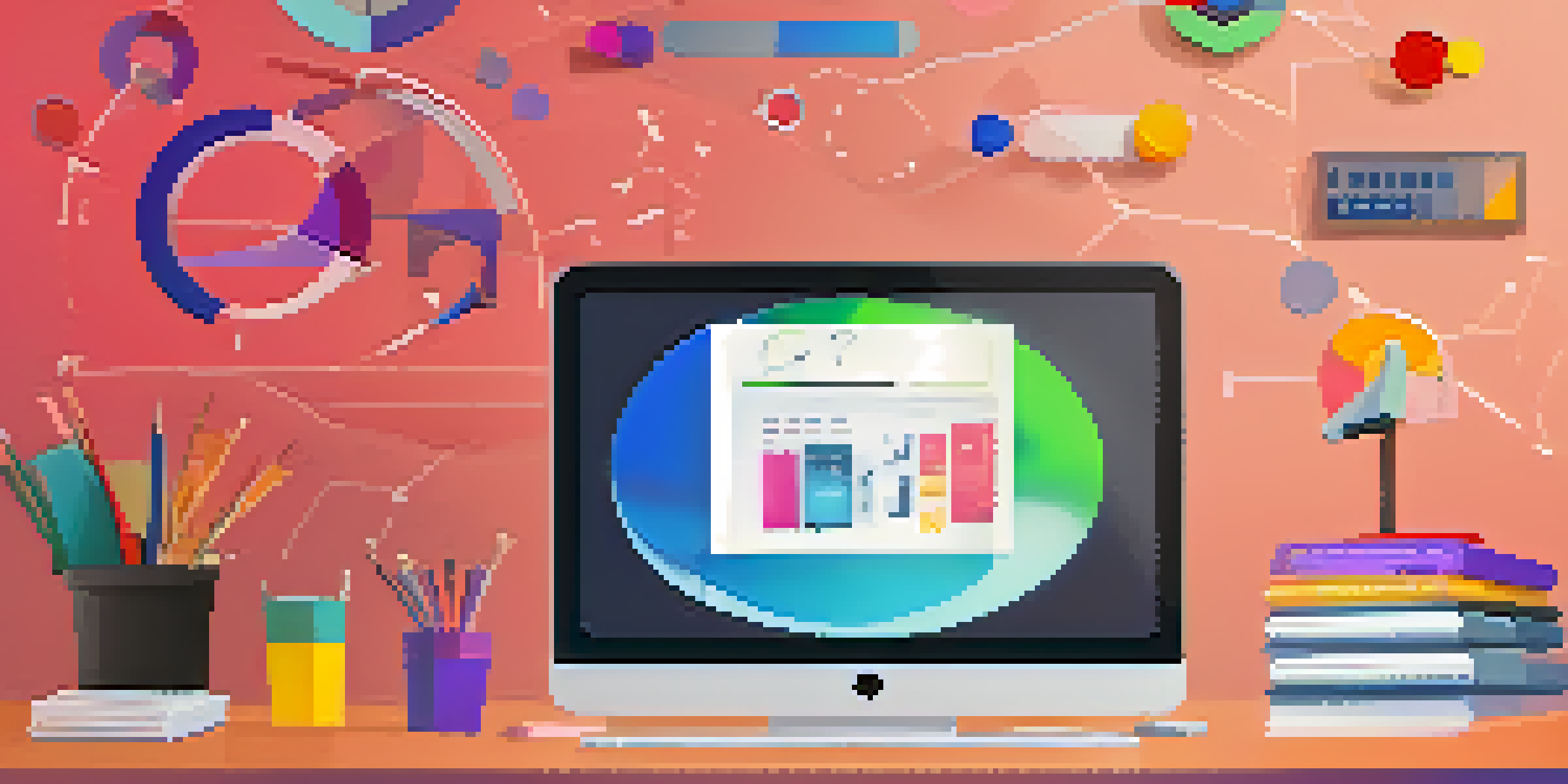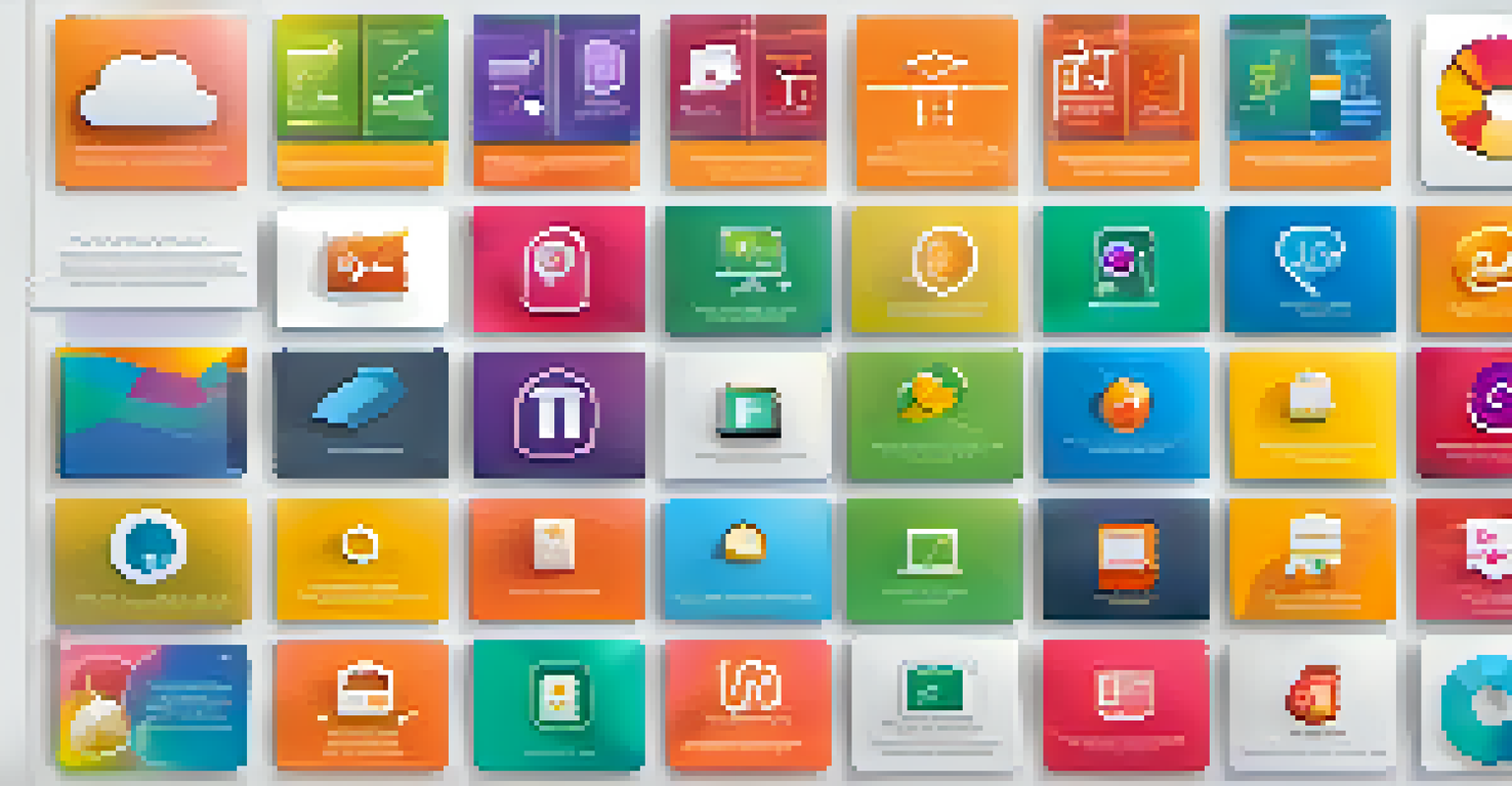Creating Visual Learning Tools for Online Communities

Understanding the Importance of Visual Learning Tools
Visual learning tools are essential in today's digital landscape. They cater to diverse learning styles, helping individuals grasp complex ideas more easily. By leveraging visuals, such as infographics and videos, educators can enhance retention and engagement in online communities.
Visuals are the most powerful tool for communication. They can create awareness, inspire action, and change minds.
Consider how a well-designed infographic can condense a page of text into bite-sized, digestible pieces. This approach not only makes information more accessible but also encourages learners to interact with the content. When users can visualize concepts, they are more likely to remember and apply what they've learned.
Moreover, visual tools foster a sense of community among learners. Sharing and discussing these tools can spark conversations, leading to collaborative learning experiences. Ultimately, the goal is to create an engaging environment that supports various learning preferences.
Identifying Your Audience's Learning Preferences
Before creating visual learning tools, it's crucial to understand your audience. Different people have different learning preferences, and tailoring your materials can significantly improve their effectiveness. Surveys or polls can be a great way to gauge what types of visuals resonate with your community.

For instance, some learners may thrive on videos, while others prefer diagrams or infographics. By analyzing your audience's feedback, you can pinpoint the most effective formats for delivering information. This targeted approach not only enhances engagement but also fosters a deeper connection with your learners.
Visual Tools Enhance Learning
Visual learning tools improve retention and engagement by presenting information in more accessible formats.
Remember, the goal is to create tools that speak to your audience. By catering to their unique preferences, you can develop resources that not only inform but also inspire. This level of personalization can make a substantial difference in the overall learning experience.
Choosing the Right Visual Formats for Content
Selecting the right visual format is key to effectively conveying your message. From slideshows and infographics to videos and interactive quizzes, each format serves a different purpose. Understanding the strengths of each format allows you to match your content with the most suitable medium.
The mind is visual. We think in pictures, not words.
For example, infographics are excellent for summarizing data, while videos can provide a more engaging narrative. If you're presenting complex information, a combination of formats might be the best approach. Using multiple types of visuals can cater to various learning styles and preferences within your community.
By thoughtfully choosing your visual formats, you can enhance clarity and comprehension. This not only helps learners absorb information more effectively but also keeps them engaged throughout their learning journey. Ultimately, the right visual tools can transform the way your community interacts with content.
Incorporating Interactivity into Visual Tools
Interactivity can take your visual learning tools to the next level. Adding elements like quizzes, clickable infographics, or interactive timelines invites learners to actively participate rather than passively consume information. This engagement can lead to better retention and a more enjoyable learning experience.
For example, consider an interactive quiz that reinforces key concepts after a lesson. Not only does this allow learners to test their understanding, but it also encourages them to revisit the material for clarification. By incorporating such features, you create an immersive environment that keeps learners coming back for more.
Know Your Audience's Preferences
Understanding your audience's unique learning preferences ensures that your visual tools resonate and are effective.
Moreover, interactive tools foster collaboration and discussion within online communities. When learners engage with each other through shared activities, they build connections and learn from one another. This sense of camaraderie can significantly enhance the overall learning experience.
Leveraging Technology for Visual Tool Creation
In today's digital age, various tools and platforms can help you create stunning visual learning materials. Software like Canva, Prezi, and Adobe Spark offers user-friendly interfaces for designing infographics, presentations, and videos. By using these resources, you can produce professional-quality visuals without needing extensive design skills.
Additionally, many platforms offer templates and resources tailored specifically for educators. These pre-made designs can save you time while ensuring that your visuals are both appealing and effective. With just a bit of customization, you can create tools that resonate with your audience.
Remember, technology is your ally in this process. Embracing these tools can streamline your workflow, allowing you to focus more on content quality and engagement. Plus, staying up to date with the latest trends in visual content creation can help keep your learning community fresh and dynamic.
Testing and Gathering Feedback on Your Tools
Once you've created your visual learning tools, it's vital to test their effectiveness. Gathering feedback from your audience can provide invaluable insights into how well the tools are meeting their needs. Consider using surveys or informal discussions to assess what works and what doesn’t.
For example, after a webinar, ask participants to rate the effectiveness of the visuals used. Their responses can guide you in making necessary adjustments to enhance clarity and engagement. It's all about creating a feedback loop that helps you continuously improve your materials.
Promote Tools for Greater Impact
Effectively promoting your visual learning tools across various channels can significantly increase their reach and effectiveness.
Moreover, encouraging an open dialogue fosters a collaborative atmosphere. When learners feel their opinions matter, they are more likely to engage with the content and contribute to the community. This two-way communication can lead to richer learning experiences for everyone involved.
Promoting Your Visual Learning Tools in Online Communities
Creating great visual learning tools is just the first step; promoting them is equally important. Share your resources across multiple channels, including social media, forums, and community groups. By effectively marketing your tools, you can reach a wider audience and maximize their impact.
Consider hosting webinars or live sessions to introduce your tools and demonstrate their effectiveness. This not only showcases your content but also allows for real-time interaction with your audience. Engaging directly with learners can help build excitement and encourage them to utilize your resources.

Additionally, collaborating with influencers or thought leaders in your niche can amplify your reach. By leveraging their platforms, you can introduce your visual tools to new audiences. This strategic promotion can significantly enhance your community's engagement and learning outcomes.